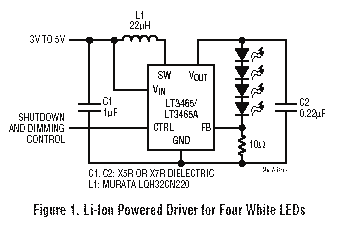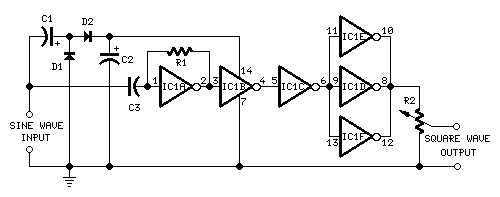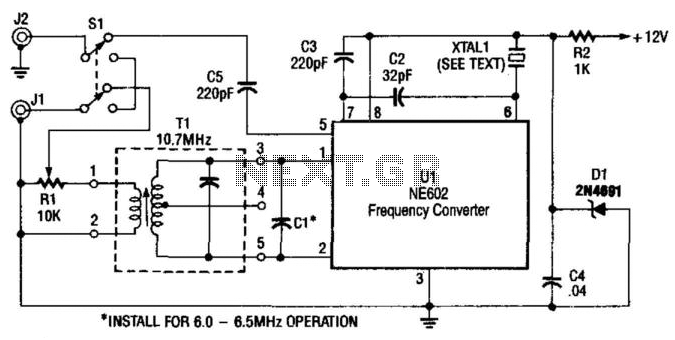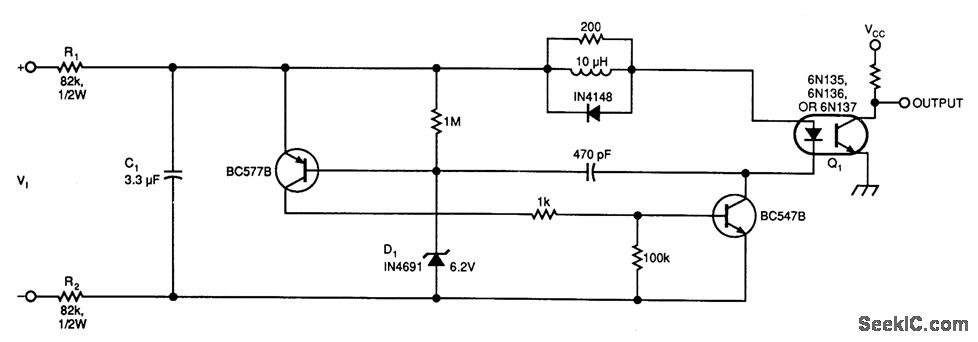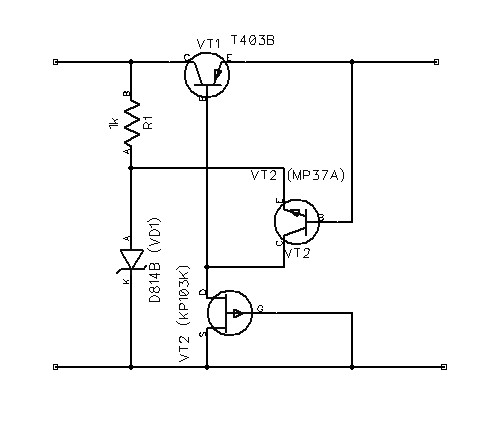
Up-Controlled Negative Voltage Converter
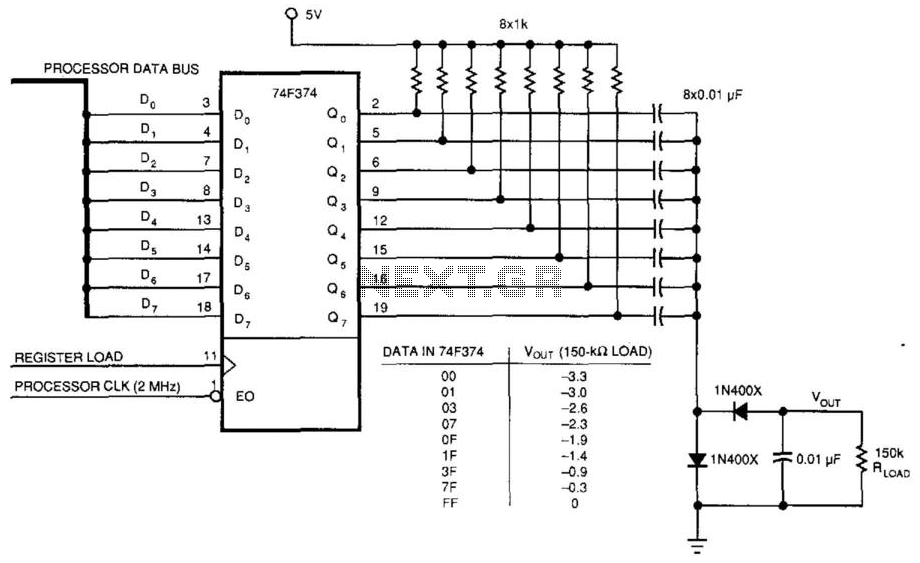
This circuit was used to produce a variable negative voltage for contrast control of an LCD display. A 74F374 generates a square wave that is AC coupled to a rectifier and load. By using the microprocessor clock and data from the processor bus, along with a properly timed load signal, the DC level generated can be controlled by the microprocessor.
This circuit employs a 74F374 flip-flop to generate a square wave output, which serves as the primary signal for creating a variable negative voltage. The flip-flop's output is AC coupled to a rectifier circuit, which converts the AC signal into a DC voltage. The rectifier typically consists of diodes arranged in a configuration that allows for the effective conversion of the square wave into a usable DC level, which can be further smoothed using capacitors to reduce ripple.
The microprocessor (uP) plays a crucial role in this circuit by providing the clock signal necessary for the flip-flop operation. Additionally, data from the processor bus is utilized to control the timing and loading of the flip-flop, allowing for precise adjustments to the output voltage level. The load signal from the microprocessor enables the system to dictate when the flip-flop should latch the input data, effectively controlling the duty cycle of the square wave output and consequently the average DC voltage produced.
To achieve variable contrast control for the LCD display, the circuit can be designed with feedback mechanisms that monitor the output voltage level. This feedback can be processed by the microprocessor to adjust the load signal dynamically, ensuring that the desired contrast level is maintained across varying conditions and display requirements. Components such as operational amplifiers may also be incorporated to further refine the output voltage characteristics, ensuring stability and responsiveness to user inputs or system changes.
Overall, this circuit provides an efficient method for generating a variable negative voltage, enhancing the functionality and user experience of LCD displays through effective contrast control. This circuit was used to produce a variable negative voltage for contrast control of an LCD displa y. A 74F374 generates a square wave that is ac coupled to a rectifier and load. By using the uP clock and data from the processor bus, and properly timed load signal, the dc level generated can be controlled by the uP.
This circuit employs a 74F374 flip-flop to generate a square wave output, which serves as the primary signal for creating a variable negative voltage. The flip-flop's output is AC coupled to a rectifier circuit, which converts the AC signal into a DC voltage. The rectifier typically consists of diodes arranged in a configuration that allows for the effective conversion of the square wave into a usable DC level, which can be further smoothed using capacitors to reduce ripple.
The microprocessor (uP) plays a crucial role in this circuit by providing the clock signal necessary for the flip-flop operation. Additionally, data from the processor bus is utilized to control the timing and loading of the flip-flop, allowing for precise adjustments to the output voltage level. The load signal from the microprocessor enables the system to dictate when the flip-flop should latch the input data, effectively controlling the duty cycle of the square wave output and consequently the average DC voltage produced.
To achieve variable contrast control for the LCD display, the circuit can be designed with feedback mechanisms that monitor the output voltage level. This feedback can be processed by the microprocessor to adjust the load signal dynamically, ensuring that the desired contrast level is maintained across varying conditions and display requirements. Components such as operational amplifiers may also be incorporated to further refine the output voltage characteristics, ensuring stability and responsiveness to user inputs or system changes.
Overall, this circuit provides an efficient method for generating a variable negative voltage, enhancing the functionality and user experience of LCD displays through effective contrast control. This circuit was used to produce a variable negative voltage for contrast control of an LCD displa y. A 74F374 generates a square wave that is ac coupled to a rectifier and load. By using the uP clock and data from the processor bus, and properly timed load signal, the dc level generated can be controlled by the uP.
